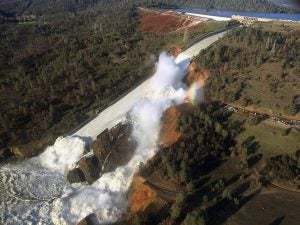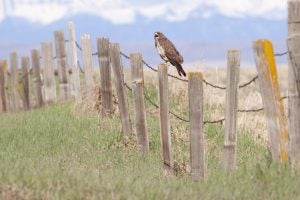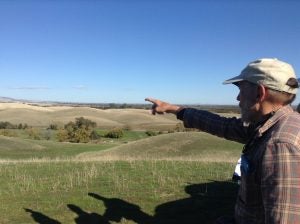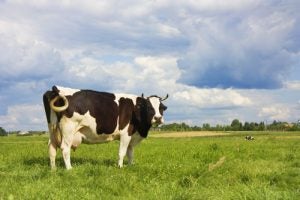
Aerial photo released by the California Department of Water Resources, showing the damaged spillway with eroded hillside in Oroville
California’s historic winter ended the drought in many parts of the state and piled up record levels of snowpack in the Sierra Nevada Mountains. With so much precipitation, surface water infrastructure – our network of dams, reservoirs and levees – has been called into action like never before, and in some cases has struggled to handle the influx of flows.
With spring temperatures on the rise, snowmelt and runoff have accelerated, adding another wave of stress to the system. And with snowpack still at 192% of average, there is even more runoff on the way.
So where will all this water go?
With many reservoirs near capacity already, water managers have had to allow spring snowmelt to flow out through the Sacramento-San Joaquin Delta and into the ocean. This is inevitable given the sheer amount of water in the system this year, and in fact, these occasional high flows provide multiple benefits to ecosystems and coastal communities.



 Despite growing up without any real interest in conservation or farming, I now spend every working day knee deep in agricultural policy – and I love it.
Despite growing up without any real interest in conservation or farming, I now spend every working day knee deep in agricultural policy – and I love it.



